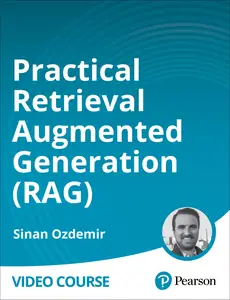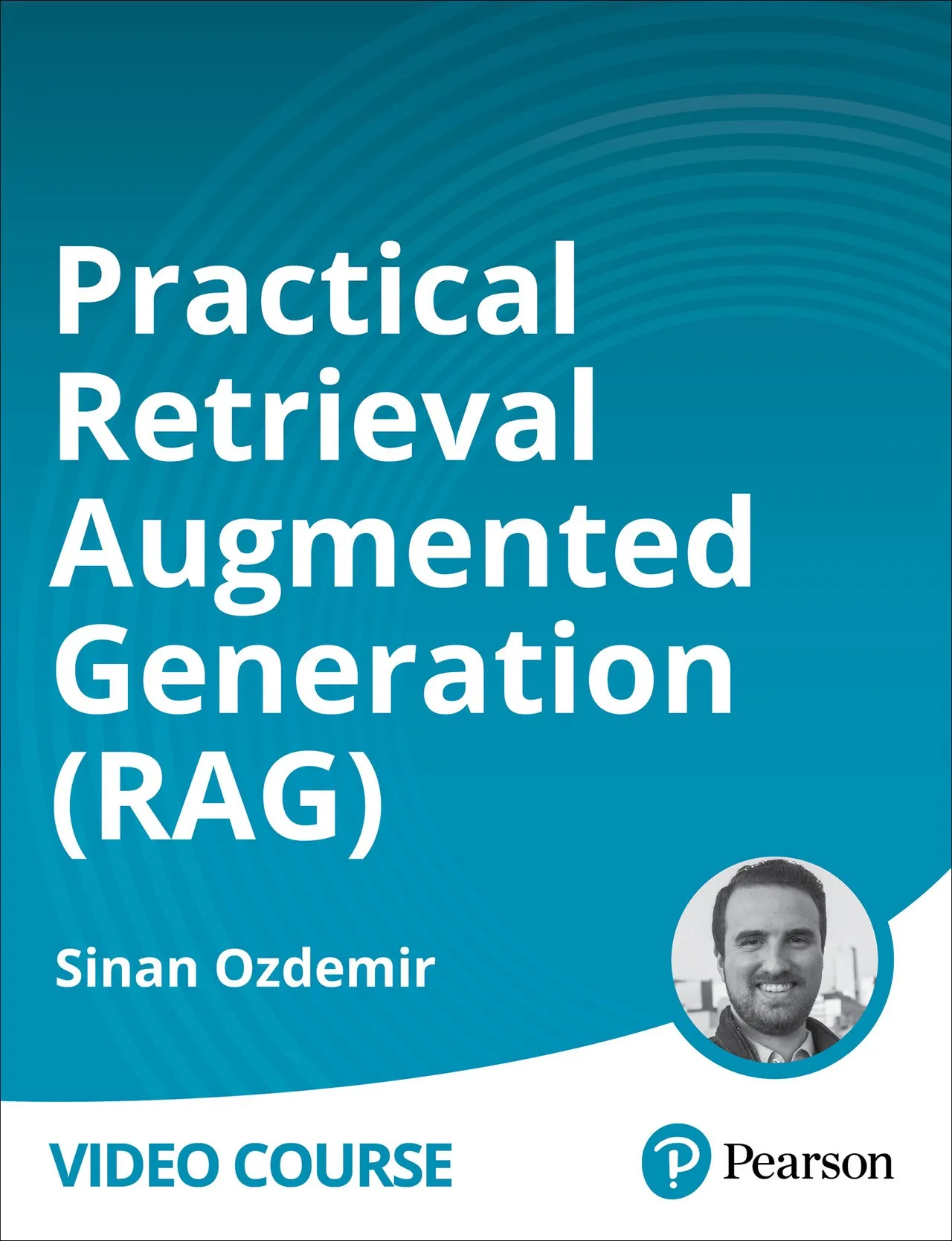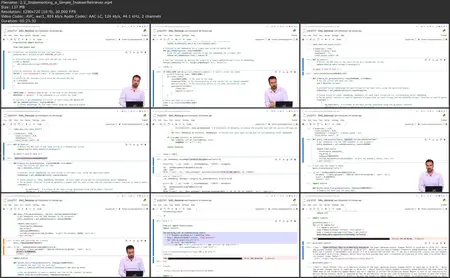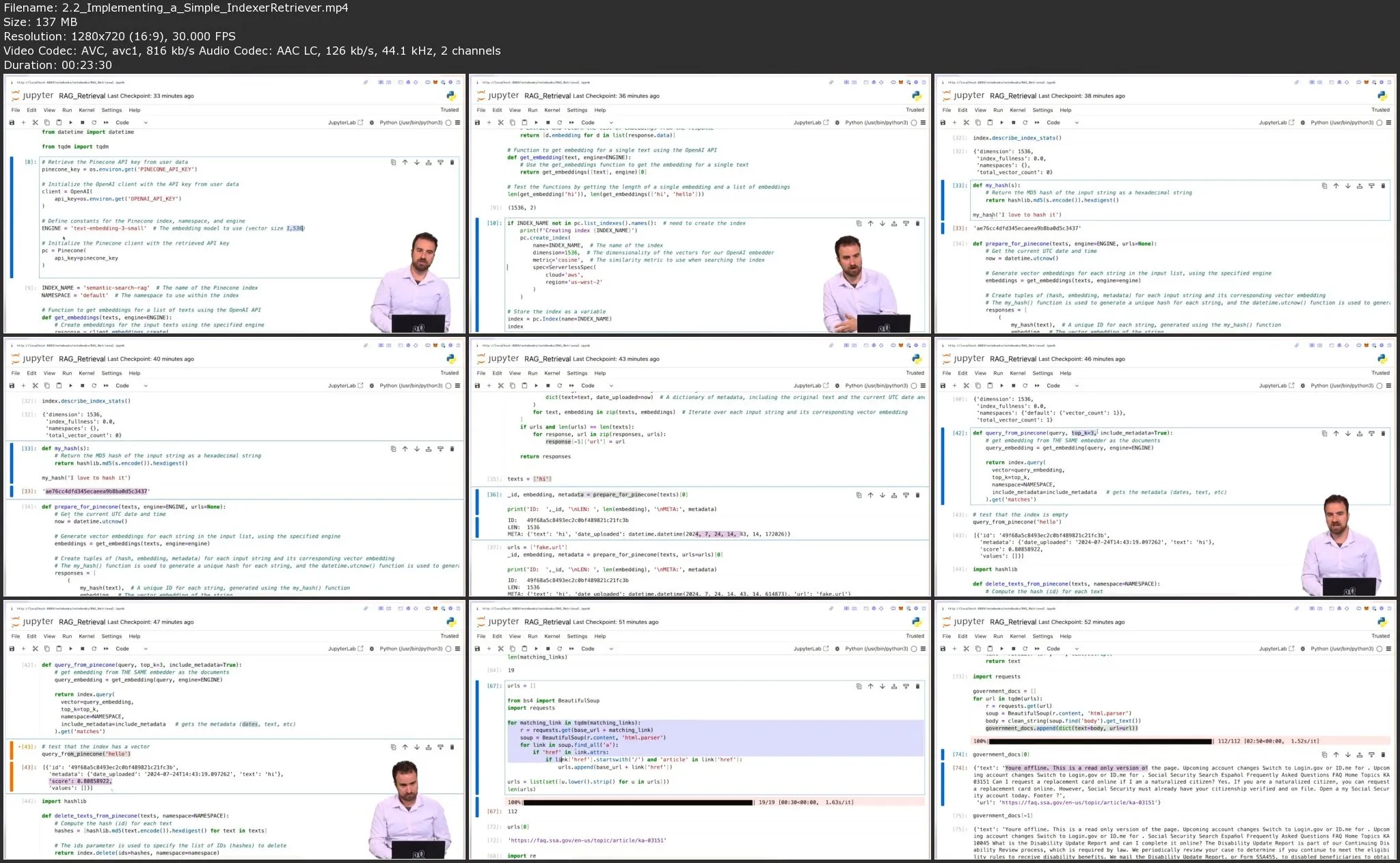Practical Retrieval Augmented Generation (RAG)
ISBN: 0135414377 | .MP4, AVC, 1280x720, 30 fps | English, AAC, 2 Ch | 4h 24m | 1.35 GB
Instructor: Sinan Ozdemir
ISBN: 0135414377 | .MP4, AVC, 1280x720, 30 fps | English, AAC, 2 Ch | 4h 24m | 1.35 GB
Instructor: Sinan Ozdemir
Start building, evaluating, and iterating on retrieval augmented generation (RAG) systems today!
Overview:
Practical Retrieval Augmented Generation shows you how to improve existing large language models by giving them the ability to access additional information that was not part of their original training data.
Learn How To:
- Develop an understanding of different types of LLMs and how they fit into RAG
- Build a RAG application using a vector database and multiple embedders
- Test different generators like GPT-4o, Claude, Command-R, and more
- Build your own API for running RAG
- Demonstrate a chat application based on your RAG work
- Utilize advance dtechniques like GraphRAG
Who Should Take This Course:
Developers, data scientists, and engineers who are interested in improving the output of their LLMs
Course Requirements:
- Python 3 proficiency with some experience working in interactive Python environments including Notebooks (Jupyter/Google Colab/Kaggle Kernels)
- Comfortable using the Pandas library and Python
- Understanding of ML/deep learning fundamentals including train/test splits, loss/cost functions, and gradient descent
Lesson Descriptions:
Lesson 1. Introduction to Retrieval Augmented Generation.
Lesson 1 presents the core components of a retrieval augmented generation system and how they work together to create a seamless user experience using real-time and dynamic data.
Lesson 2. Building the Foundations
Lesson 2 covers different LLMs and which part of the family tree they come from. Whether they’re auto-encoding models, the fast readers of the bunch, or auto-regressive models, the ones that know how to write, each one will have a place in your RAG system.
Lesson 3. Advanced Prompt Engineering Techniques
Asking a question of an LLM is easy, but getting it to solve a task reliably, consistently, and with a decent level of accuracy can be a challenge. Lesson 3 focuses on the core components of a good prompt, uncovering how a language model thinks about tasks and how we can ask it to do these tasks and iterate on our prompts quickly. By the end of the lesson, you will know how to get the most consistent and reliable results from nearly any generative AI.
Lesson 4. Developing a RAG System
This lesson has you putting together all of the components you’ve been seeing so far into a single application that we can test end-to-end to get an initial gut check for how well the chatbot works. It also reveals just how little we actually know so far about how the system will work at scale, opening up the doors for LLM evaluations in later sections. This lesson also introduces the world of open-source embedders and generators and how they stack up against their closed-source cousins.
Lesson 5. Evaluating and Testing RAG Systems
In this lesson, the notion of gut checks is left behind for actually quantifying what it means for a retriever to be accurate, precise, and able to recall relevant documents while judging generators on their ability to be safe and conversational and ignore noise. You will also see different methods for evaluating the generators of the system to keep them honest and helpful.
Lesson 6. Expanding and Applying RAG Systems
The final lesson explores the cutting edge of retrieval augmented generation by fine-tuning open-source embedders, looking at how re-ranking systems can bolster your retrieval component, and showing how knowledge graphs can augment even the simplest RAG applications with dynamic, real-time, and transparent structured data by building a GraphRAG system.





